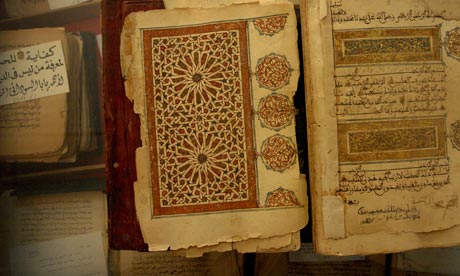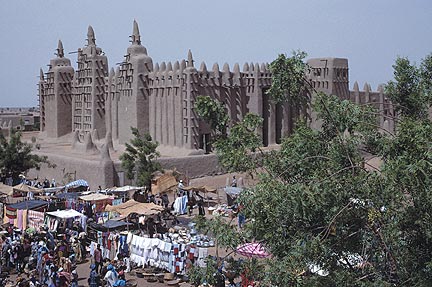In what is now Algeria, an empire began around 200 BC, stretching all the way to the River Mulucha. In the early years it was mostly just a slew of different nomadic tribes and bands. The Eastern part was known as Massylii and the Western side was Masaesyli. It was not a cohesive, unified civilization until the Second Punic War (218-206 BC) that Massylii king Massinissa deafeated Syphax of the Masaesyli region.
During this time, the Romans fought the Carthagians largely over control of a Iberian coastal city. This meant that since the Massylii were allies to the Romans, and the Masaesyli had ties with Carthage (Syphax was married to the daughter of a Carthagian commander named Hasdrubal), that Massylii were able to conquer their Western neighbors.
Massinissa and his men contributed greatly to the Roman victory lending their expert horsemanship and clever cavalry tactics. Syphax would be exiled to Tibur, where he would die.
Massinissa ruled the Numidians for nearly fifty years with the support of the Roman Empire behind him. He wanted Numidian pastoral people to become peasant farmers, and help make Numidia a agrarian society. Also during this time, he overtook a great amount of further Carthagian territory, and was one of the most powerful men in North Africa. He died in 148 BC, and at this time his empire extended all the way from Mauretania through former Carthagian territory Cyrenaica, an eastern coastal region of what is modern day Libya.
After his death, Numidia saw a number of different leaders, causing a divide among the civilization, which prompted Rome to split Numidia into two parts; West and East.
Later they would have wars with Rome, over their de facto hegemony of the place. Julius Caesar around 40 BC formed a new province known as Africa Nova out of some of the Numidians’ land, and Augustus united Africa Nova and Africa Vetus (old Africa), which was the area surrounding Carthage. A separate province of Numida would be created formally by emperor Septimius Severus. Rome’s Third Legion army took up permanent base at Lambessa. Increased security by the Romans, the Numidians economy flourished through two centuries.
By the third century Christianity spread very wildly, and Numidia became a center of a sect of the religion called Donatism. It was a religion which was fairly sizable. It’s inception grew out of the emperor Diocletian who persecuted and killed Christians throughout his reign. Donatists refused to accept sacrament from or recognize any priest, or person who had renounced Christianity during this fearful time.
The Catholics felt that someone could be absolved of such a sin through years of Penance, but the Donatists felt that anyone who had renounced the religion after having been baptized should not be allowed to hold any kind of post or have authority within the church. They also had problems with Emperor Constantine, and he presented a death penalty to all who “disturbed the peace of the kingdom”. They did not recognize Constantine as the holy figure he saw himself as.
Numidia, and Donatism would both wain in the centuries to come with attack from Vandals, the Arab Conquest and the gradual decline of Christianity in North Africa.
http://www.britannica.com/EBchecked/topic/422426/Numidia
http://www.britannica.com/EBchecked/topic/169009/Donatist
















This large landlocked African nation that straddles the Saharan desert to the north of the country and the Sudanese Savanna to the south. Chad is the 5th largest country in Africa and is split between north and south by the Sahelian region, which is A large steppe region that stretches across Chad and serves as the border between the north Saharan region and the south Soudanian region. This makes the geography of Chad a very diverse mix of Saharan desert and Sudanese savanna. Chad is one of 48 landlocked countries and, due to its large size, is bordered by several African nations: To the North it borders Libya, to the West, Chad borders Sudan (though not South Sudan), and in the South it borders the Central African Republic and Cameroon which also borders Chad in the East along with Nigeria and Niger, which it shares the Lake Chad with. Lake Chad is the 2nd largest lake in Africa and home to over 80 species of fish and is the continent’s most important wetlands area, serving the vast wildlife that make itself home in Chad. Chad is known for its varied wildlife, especially that live in the southern Sudanese savanna region. Such animals that live in this region include large African elephants, hippopotamuses and rhinoceros as well as giraffes, antelopes and buffalo. You may also encounter other animal species such as lions, hyenas, cheetahs, and leopards. Chad is also home to a plethora of snake species as well as over 500 species of bird. The varied wildlife of Chad mirrors its culture and people, as the country is home to various people that speak many different languages from one another. Music is an important part of Chad culture, which is characterized by using multiple unique instruments that give an equally unique sound. Chad is a large, diverse nation that has a rich culture as well as interesting and varied wildlife that inhabit the 3 distinct and unique geographical regions, from the Sahara region to the north, to the steppe Sahelian region, and finally to the Sudanese savanna region in the south that should be visited and experienced by anyone who would like to see the varied geography, wildlife, and culture that Chad can provide.
large steppe region that stretches across Chad and serves as the border between the north Saharan region and the south Soudanian region. This makes the geography of Chad a very diverse mix of Saharan desert and Sudanese savanna. Chad is one of 48 landlocked countries and, due to its large size, is bordered by several African nations: To the North it borders Libya, to the West, Chad borders Sudan (though not South Sudan), and in the South it borders the Central African Republic and Cameroon which also borders Chad in the East along with Nigeria and Niger, which it shares the Lake Chad with. Lake Chad is the 2nd largest lake in Africa and home to over 80 species of fish and is the continent’s most important wetlands area, serving the vast wildlife that make itself home in Chad. Chad is known for its varied wildlife, especially that live in the southern Sudanese savanna region. Such animals that live in this region include large African elephants, hippopotamuses and rhinoceros as well as giraffes, antelopes and buffalo. You may also encounter other animal species such as lions, hyenas, cheetahs, and leopards. Chad is also home to a plethora of snake species as well as over 500 species of bird. The varied wildlife of Chad mirrors its culture and people, as the country is home to various people that speak many different languages from one another. Music is an important part of Chad culture, which is characterized by using multiple unique instruments that give an equally unique sound. Chad is a large, diverse nation that has a rich culture as well as interesting and varied wildlife that inhabit the 3 distinct and unique geographical regions, from the Sahara region to the north, to the steppe Sahelian region, and finally to the Sudanese savanna region in the south that should be visited and experienced by anyone who would like to see the varied geography, wildlife, and culture that Chad can provide.
Bibliography : http://en.wikipedia.org/wiki/Chad